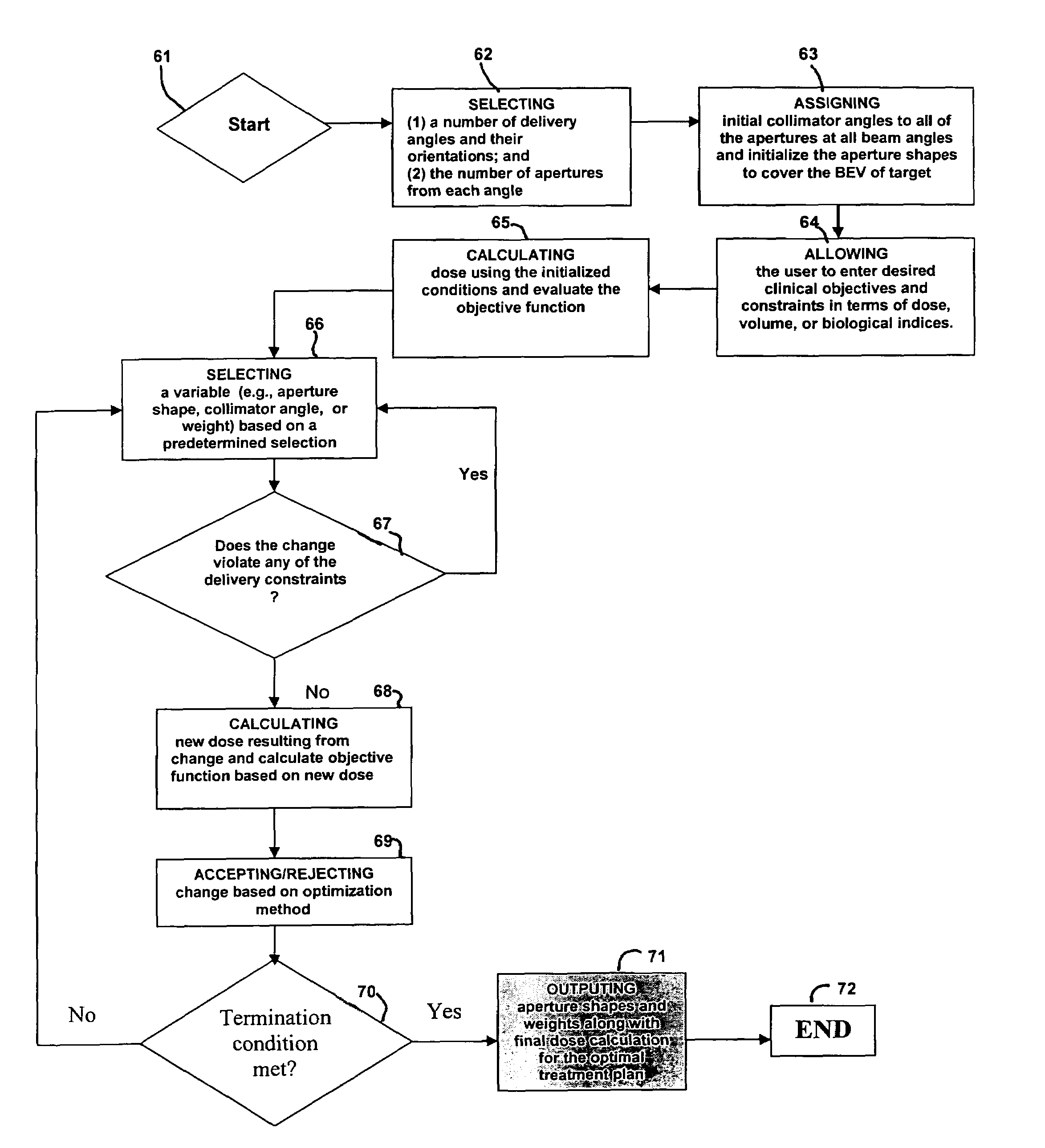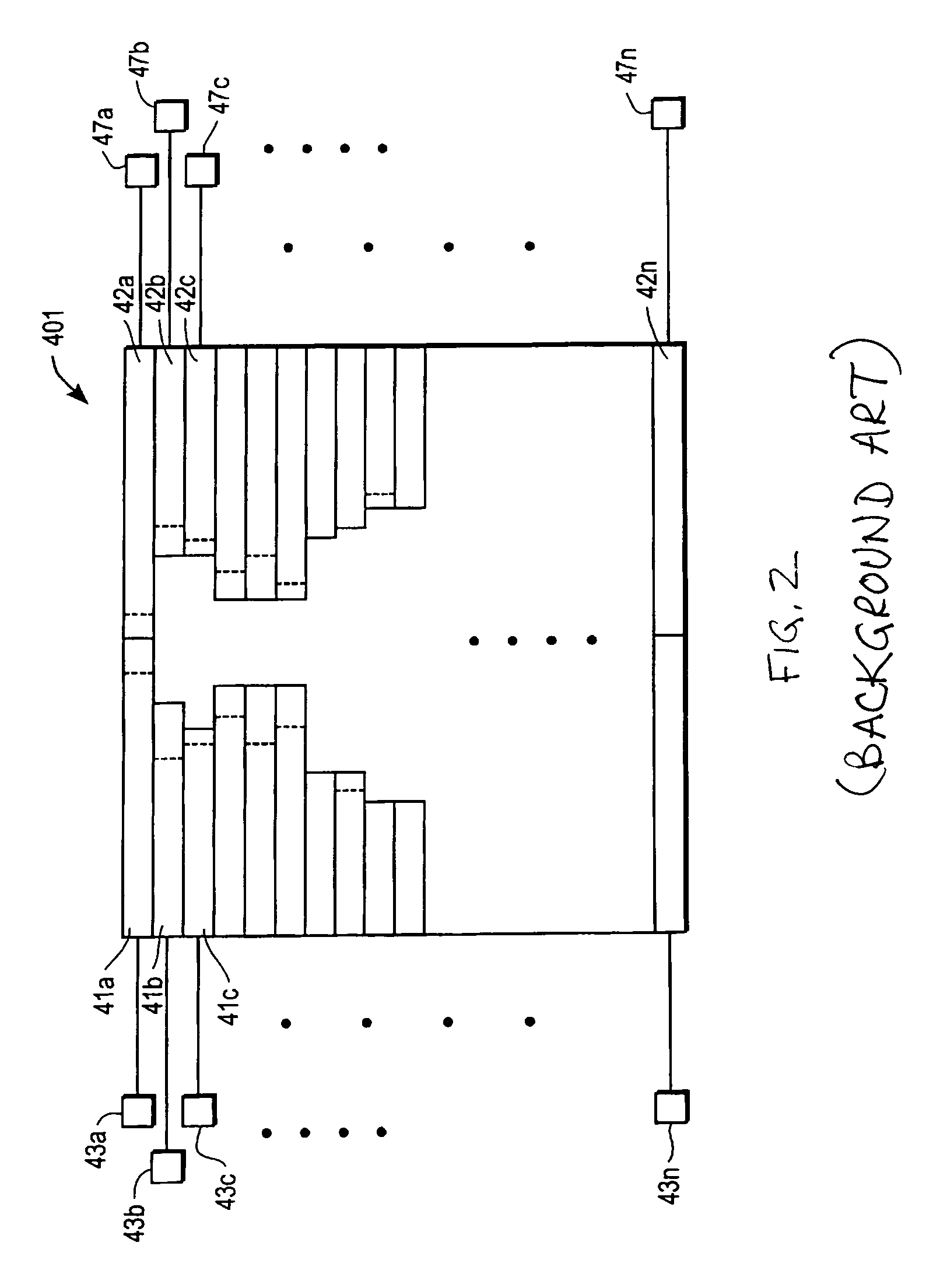Method for intensity modulated radiation treatment using independent collimator jaws
a collimator jaw and intensity modulation technology, applied in radiation therapy, diaphragm/collimeter handling, therapy, etc., can solve the problems of affecting the treatment effect of patients, the mlc 401 becomes more complicated, and the radiation field alone provides limited freedom in shaping the volume of high radiation dose to conform to tumors, and adverse effects can arise in the patient being treated
- Summary
- Abstract
- Description
- Claims
- Application Information
AI Technical Summary
Benefits of technology
Problems solved by technology
Method used
Image
Examples
Embodiment Construction
[0032]The present invention enables IMRT treatments to be delivered with the use of simple independent collimator jaws. Instead of optimizing the intensities of beamlets, the present invention directly optimizes the field shapes and the corresponding weights of the rectangular apertures formed by the simple independent collimator jaws. Furthermore, the optimization step of the present invention does not explicitly use beamlets and thus allows the simple independent collimator jaws to form field boundaries at any position (i.e., not merely at increments of a finite-sized beamlet). The method of the present invention allows each rectangular field shaped by the collimator jaws to take a different collimator angle. The combination of these optimally weighted apertures with optimal collimator angles at every beam angle creates a highly modulated radiation intensity distribution for achieving the clinical objectives of the treatment plan. Since the field boundaries are not limited by the ...
PUM
 Login to View More
Login to View More Abstract
Description
Claims
Application Information
 Login to View More
Login to View More - R&D
- Intellectual Property
- Life Sciences
- Materials
- Tech Scout
- Unparalleled Data Quality
- Higher Quality Content
- 60% Fewer Hallucinations
Browse by: Latest US Patents, China's latest patents, Technical Efficacy Thesaurus, Application Domain, Technology Topic, Popular Technical Reports.
© 2025 PatSnap. All rights reserved.Legal|Privacy policy|Modern Slavery Act Transparency Statement|Sitemap|About US| Contact US: help@patsnap.com



